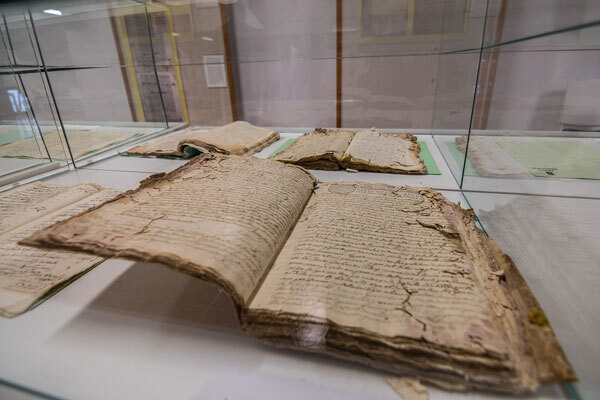 The digitization of government records isn’t always as simple as slapping a piece of paper onto a scanner. Many records require special handling because the nature or condition of the record makes them particularly delicate or fragile. This can range from century-old records inscribed on paper as thin as onion skin to three-dimensional artifacts that defy two-dimensional scanning techniques.
The digitization of government records isn’t always as simple as slapping a piece of paper onto a scanner. Many records require special handling because the nature or condition of the record makes them particularly delicate or fragile. This can range from century-old records inscribed on paper as thin as onion skin to three-dimensional artifacts that defy two-dimensional scanning techniques.
So, how exactly can government agencies handle digitizing these kinds of records?
Preparation
Older and/or delicate records can be sensitive to ambient conditions, including exposure to light, extreme temperatures, humidity, moisture, etc. In some cases, the act of scanning itself can potentially damage the record or artifact. So, before anything else, it’s key to understand what you’re getting into and ensure you are prepared to deal with the specific conditions of the record(s).
“In much the same way, you can’t restore a 16th-century book in the way you would a 20th-century book,” conservator Sonja Jordan-Mowery tells Smithsonian Magazine. “They weren’t made the same way. Not only is it not the same materials, but the techniques that were used are not the same. A properly trained conservator will not only know how to do it, but will know what is historically sympathetic to the material.”
- Assess the Condition: Evaluate the condition of the records to determine their fragility and any specific handling requirements.
- Clean the Records: Gently clean the records using appropriate methods to remove dust and debris. Use soft brushes, air blowers, or specialized cleaning solutions as needed.
- Stabilize the Records: If necessary, perform minor conservation treatments to stabilize the records. This may include flattening curled pages, repairing tears, or supporting weak areas.
Equipment and Environment
In California, a project to digitize two million pages of water rights records by the state’s water regulator has been forced to account for the fragility of these records, many of which are a century or more old and in bad condition. To handle these records, they’ve created a specialized “digitization bullpen” in which damaged or fragile records can be triaged for repair or special handling prior to scanning.
A separate scanning project at the Smithsonian to create 3D representations of ancient fossils has required implementation of a unique scanning station that uses multiple DSLR cameras capturing simultaneously images from multiple angles, which will then be stitched together in a computer to create the 3D model.
In short, special records often require special equipment and special environments to digitize.
- Choose the Right Equipment: Use high-resolution scanners or cameras designed for archival materials. Flatbed scanners, planetary scanners, and overhead digital cameras are commonly used.
- Create a Controlled Environment: Work in a clean, dust-free, and climate-controlled environment to protect both the records and the digital equipment.
Metadata and Documentation
No digital record is complete without all appropriate metadata attached. In the California water rights project, for example, the digitizers have created a “choreographed dance of paper pushing” that cycles the records from station to station. After scanning, the next worker assigns appropriate metadata and geocodes that will allow users and the public to later retrieve the record at will.
Indeed, at heart, this is the whole point of digitization: “Making the information that would otherwise be silent in a museum drawer discoverable and maybe even useful to the public,” says Nicholas Pyenson, Lead Curator, Chair, and Curator of Fossil Marine Mammals at the Smithsonian National Museum of Natural History. Appending the appropriate metadata and documentation is key.
- Capture Metadata: Record metadata for each item, including information about the original material, the digitization process, and any relevant descriptive data.
- Document the Process: Keep detailed records of the digitization process, including equipment settings, file formats, and any issues encountered.
By following these best practices, you can ensure the careful digitization and preservation of antique, delicate, and fragile records, making them accessible for future generations while protecting the original materials. For more guidelines for different types of unusual or easily damageable records, visit the U.S. National Archives and Records Administration’s digitization FAQs.
About PSL
PSL is a global outsource provider whose mission is to provide solutions that facilitate the movement of business-critical information between and among government agencies, business enterprises, and their partners. For more information, please visit or email info@penielsolutions.com.

